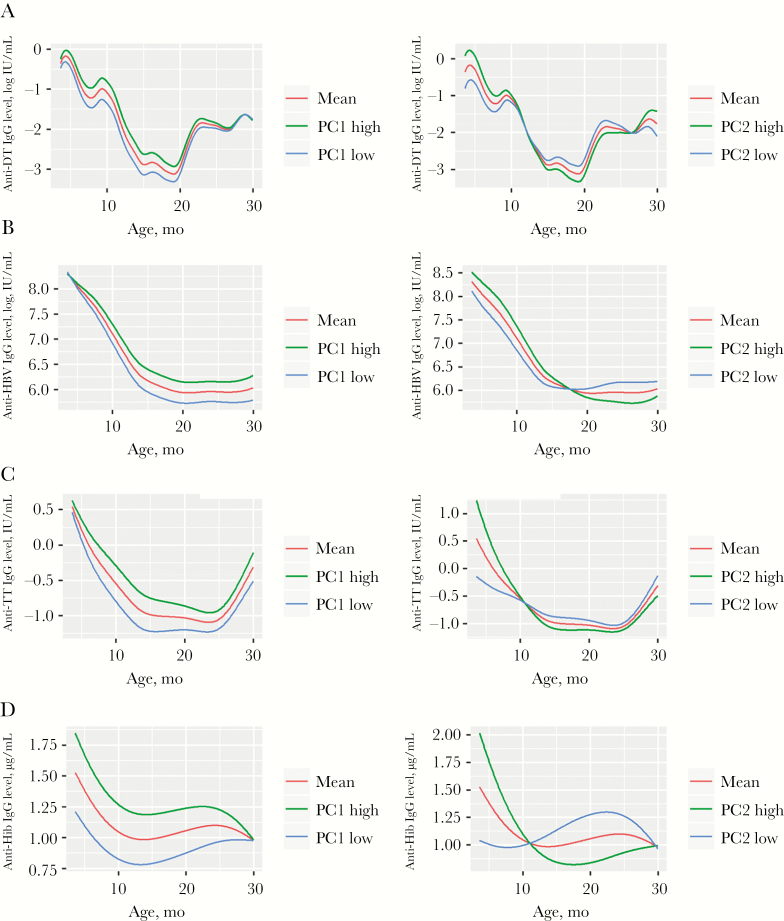Figure 3.
Patterns of circulating anti–diphtheria toxoid (DT; A), anti–hepatitis B virus (HBV; B), anti–tetanus toxoid (TT; C), and anti–Haemophilus influenzae (D) immunoglobulin G (IgG) in infants during ages 6–30 months. A functional principal component (PC) approach was used to find patterns of variation within the longitudinal vaccine responses. PC1 and PC2 represent functional principal components of the antivaccine IgG profile; PC1 (left panels) reflects the height of the response over time, and PC2 (right panels) reflects the tendency to crossover from high to low levels or from low to high levels of antivaccine antibody over time. IgG levels were measured by enzyme-linked immunosorbent assay. In each panel, the red line shows the mean value for all children; green and blue lines show the mean values for children with high (top quartile) and low (bottom quartile) PC values, respectively. Vaccinations were given at 6, 10, and 14 weeks of life, without further boosting, according to Kenya Ministry of Health guidelines.

